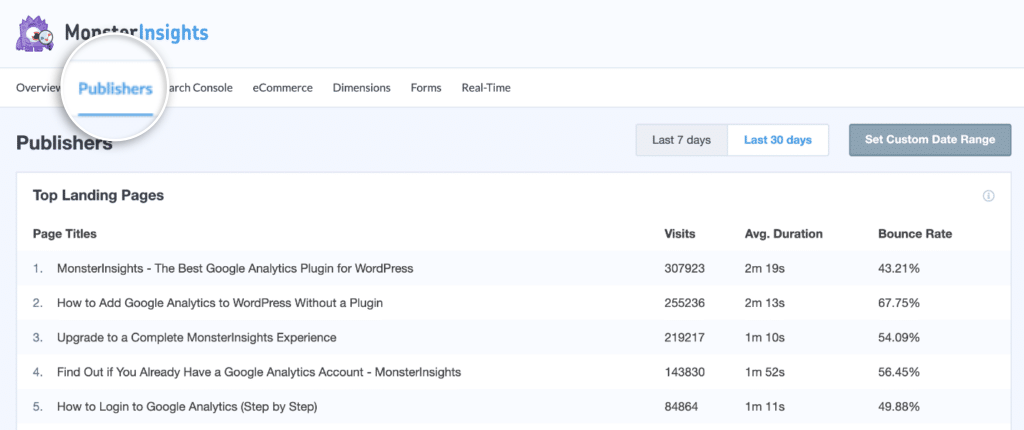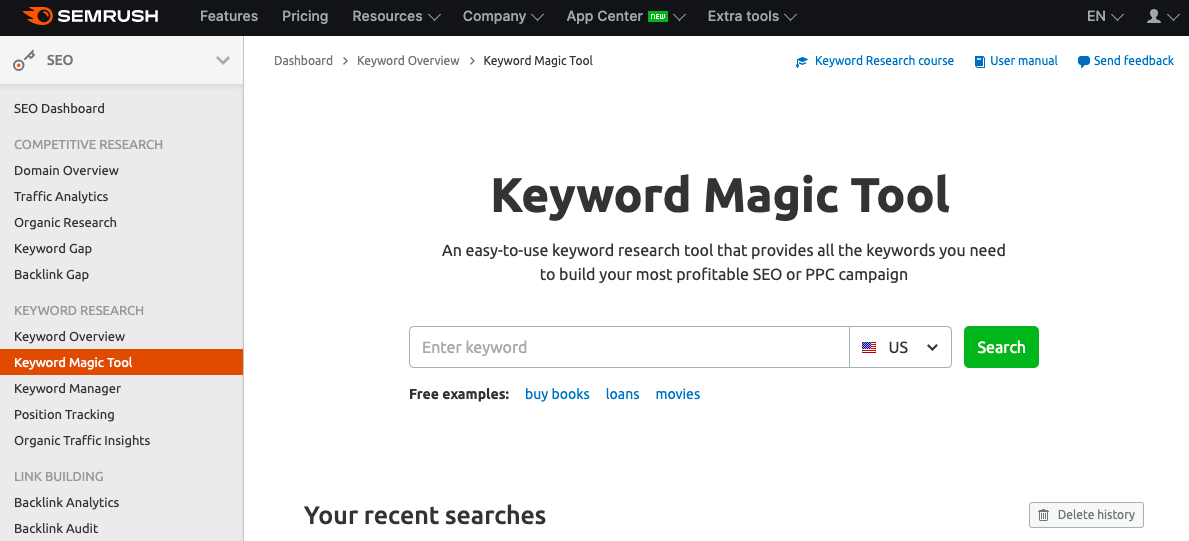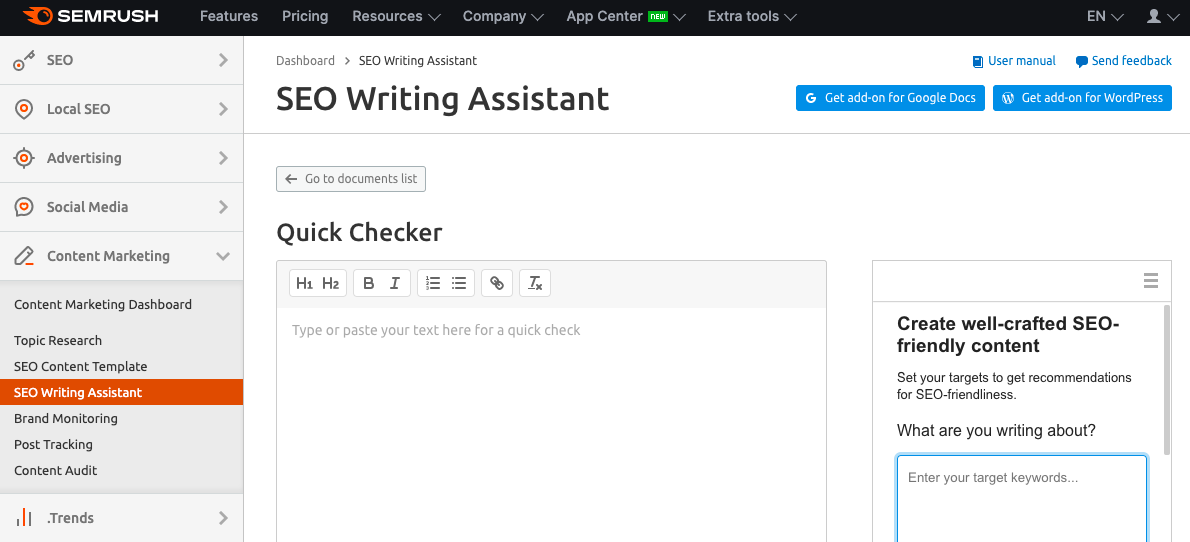When we write blogs, we want them to be noticed, read, and liked. Blogs have the power to drive tons of traffic to your site. This in turn gives you the chance to create more brand awareness and keep your audience engaged.
To get your blog noticed, you’ll want to make sure it’s optimized for search engines. This means your blog will appear in the top ranks of relevant search queries.
And in doing so, you’ll increase the chances of attracting the right people to your website, the ones who will be more likely to convert into subscribers and paying customers.
At the same time, you also want to write for your audience so that they find your content interesting and come back for more.
So who do you write for, search engines or readers? The trick lies in writing for both and it’s actually an easy thing to do.
Let’s dive into how you can write a blog post that both search engines and your readers will love.
The Best Way to Get Search Engines to Love Your Content
Search engines like Google are capable of sorting through billions of web pages and giving users the most relevant results for what they’re searching for.
Google uses hundreds of ranking factors to determine whether your content is the right match. This makes it impossible to cover every ranking factor to get your blog to the top ranks.
Plus, the Google algorithm is constantly being updated, so if you choose that route, chances are you’ll be forever optimizing your blog post!
A much better way to write a blog post that search engines will love is to write a blog post that your target audience will love.
Here’s why—The reason Google is rapidly evolving is to provide the best user experience possible. Their ultimate goal is to keep their users happy.
When you line up with that goal, search engines will automatically love your content.
With that in mind, let’s take a look at how to craft blog posts that are optimized to rank on search engines.
Learning What Your Audience Wants
When you start blogging, the first step you need to take is to understand your audience. You need to learn everything you can about them, such as:
- Where are they located?
- What sources do they come from?
- When are they active online?
- What pages do they view the most?
- What campaigns do they engage with?
- What do they stay away from on your site?
These are just some of the questions you need to ask about your audience. Keep in mind, this would vary depending on your business and target market.
When you know who your audience is, you’ll be able to pick the right topics and craft blogs that they’ll love and engage with.
To learn about your audience, you’ll need access to your website data. You can sign up for a free account with Google Analytics and connect it to your website. The process is a bit technical but once it’s set up, you’ll get access to comprehensive website data.
If that’s all too much, you’ll want to use a tool like MonsterInsights. This is a WordPress tool and it lets you connect to Google Analytics in a few clicks. Then it takes complex web data and turns it into reports that are easy to read and understand. That means you’ll get all the information you need without spending too much time.
MonsterInsights also has a Publishers report so you can track the performance of your blog posts easily.

With this analytics tool, you’ll be able to learn more about your audience and view popular posts, traffic, active users, geographic location, referral sources, and more.
Finding the Right Subjects to Write About
Before you write a blog, you need to make sure that the topic is in line with your business. This is extremely important to build domain authority and establish your brand as a trusted source of information.
It’s best to stay away from writing random content that is vaguely related to your brand. Instead, you first need to ask yourself what kind of audience you want to attract to your website.
This audience will truly be interested in what you have to say and will be more likely to revisit, become a subscriber, and even a paying customer.
You can easily achieve this goal by planning your content calendar ahead of time. Find topics that are in your niche and list them down.
Semrush has built-in keyword tools to help you find topics that are relevant to your domain. You can also see what keywords competitors are ranking for. This helps find new ideas and close content gaps as well.

By sticking to content that’s in line with your brand, you’ll be able to build a base of loyal blog readers and subscribers.
Crafting Content the SEO Way
Not too long ago, there were thousands of bloggers stuffing keywords into their content to rank on search engines. But this didn’t work out in the long run because their content didn’t satisfy users and search engines caught on to the trick soon enough.
Considering how much we’ve advanced in a few short years, it’s best to always write content for your readers first, then you can optimize it for search engines as well.
You can’t and won’t go wrong if you write content that’s valuable to your readers. Google and other search engines are smart enough to detect what’s adding value and what’s spam.
So your blog post needs to be helpful and provide good information or solutions to the reader. It’s really that simple.
Here are a few SEO best practices you can keep in mind when you’re crafting your post:
- Use simple language that anyone can understand
- Structure your post into headings, subheadings, and bullet lists so it’s easy to find information
- Add relevant keywords but avoid forcing them into your content
- Optimize the length of your post but don’t add buffer content to make it longer
- Include a meta description so readers know what your post is about when they see it in search results
Another helpful tip here is to write posts like you’re talking to a friend or colleague who needs your expertise or help.
Analyzing Your Content for SEO-Engine Friendliness
Sometimes, you can write the best and most helpful blog post and it still doesn’t get noticed by search engines.
So before you publish your post, you need to analyze it through the lens of search engines.
And there are so many SEO tools in the market to help you do that in a matter of minutes. These tools help you take those final steps to make your content SEO friendly.
For instance, inside the Semrush dashboard, you’ll find content marketing tools to optimize your post. You can use the Writing Assistant to analyze your content. All you have to do is enter target keywords, select your audience, and then paste your text.

The assistant will analyze your content and help you with editing suggestions and keywords you can add to enrich your post to get better SEO results.
If you’re using WordPress, you can rely on a tool like All in One SEO too. This plugin lets you easily meet search engine requirements. You’ll be able to:
- Analyze and optimize blog titles
- Add title tags and meta descriptions
- Insert target keywords
- Modify the post URL
- Customize social media descriptions
- Add rich snippets schema
...and more.
Getting Your Blog to Stay in the Top Ranks
Once you get your blog post to rank, it can just as easily fall in ranking if someone else publishes new or better content.
Google and other search engines value freshness, so if you want to keep your posts on the top ranks of SERPs (search engine results pages), you need to update them regularly.
Always have a plan and follow an SEO checklist right from the start to update these posts every few months so that it reflects the latest news, information, statistics, and any other data.
You’ll also want to make sure your blogs have internal links. Semrush makes it easy to analyze and track internal links using the same dashboard.
As you publish posts, you can continue to track their performance on Google Analytics or MonsterInsights to see how your audience responds to them. Then you can decide what posts need to be updated and make changes as you go to optimize traffic and conversions.
With the right SEO tools, you don’t need to be an SEO expert to rank on search engines. When you know what your audience and search engines are looking for, you can easily get your blog to climb to the top ranks and stay there.
